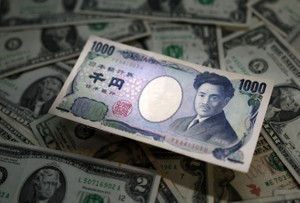By KUNIHIKO IMAI/ Staff Writer
January 26, 2023 at 16:52 JST
NARA--Researchers have unearthed a shield-shaped bronze mirror and massive iron sword in an ancient kofun burial mound here, unprecedented discoveries of their kind in Japan.
The unusually shaped mirror and sword of more than 2 meters were discovered at the Tomiomaruyama kofun, Japan’s largest round kofun, which was created in the second half of the fourth century.
The Nara Municipal Buried Cultural Properties Research Center, which excavates and researches kofun, and the Nara prefectural Archaeological Institute of Kashihara, which assists in the excavation, announced the discoveries on Jan. 25.
Seigo Wada, director of the Hyogo Prefectural Museum of Archaeology, who gave advice on the excavation, said, “I wonder about the status of the person buried with the objects, as the individual was interred with a very unusual sword and mirror. There is high expectation for the study of the contents of the coffin, too.”
The Nara center started excavating the Tomiomaruyama kofun in fiscal 2018.
During the current fiscal year, experts excavated a part of the kofun called "tsukuridashi," which is a projected part in the middle portion of the burial mound, and found a burial facility housing a 5-meter-long wooden coffin.
The experts discovered an iron sword and a bronze mirror in the clay that covered the coffin.
This was the first time that a shield-shaped bronze mirror was discovered at an archaeological site in Japan.
Complex patterns are inscribed on the back and experts praise the mirror as “a masterpiece of bronze artifact from the Kofun Period,” which lasted from the third to the seventh century.
The mirror is around 64 centimeters long and about 31 cm wide. Typically, bronze mirrors that are found at archaeological sites are rounded, but this one is shield-shaped.
The middle part of the back of the mirror is raised, so that it can be picked up. Two rounded patterns sandwich the raised portion on the back of the mirror.
The patterns are identical to the patterns inscribed on a type of ancient mirror called “Daryukyo.” Daryukyo is a type of mirror that was made in the Japanese archipelago in the Kofun Period.
For this reason, experts named the shield-shaped mirror “Daryumon shield-shaped bronze mirror.”
The surface of the bronze mirror is the largest of any bronze mirror found at an archaeological site in Japan.
Until this discovery, the bronze mirror discovered at the Hirabaru ruins in Fukuoka Prefecture had the largest mirror surface, which is 46.5 cm in diameter.
The sword, which is around 2.37 meters long and about 6 cm wide, is a type called "dakoken," whose blade is slightly bent, like a snake. This is the largest sword discovered intact at an archaeological site in Japan.
Experts believe that the sword was a ceremonial instrument to ward off evil, not a weapon, due to its large size.
They believe that no robber had opened the wooden coffin to pilfer its contents as it was found in good condition.
The Nara city board of education plans to study the coffin’s contents in fiscal 2023 or later.
It will open the excavation site where the mirror and sword were found to the public on Jan. 28 and 29.
The mirror and sword will not be shown at this time as they are undergoing restoration.




















Stories about memories of cherry blossoms solicited from readers
Cooking experts, chefs and others involved in the field of food introduce their special recipes intertwined with their paths in life.
A series based on diplomatic documents declassified by Japan’s Foreign Ministry
A series on the death of a Japanese woman that sparked a debate about criminal justice policy in the United States
A series about Japanese-Americans and their memories of World War II
Here is a collection of first-hand accounts by “hibakusha” atomic bomb survivors.